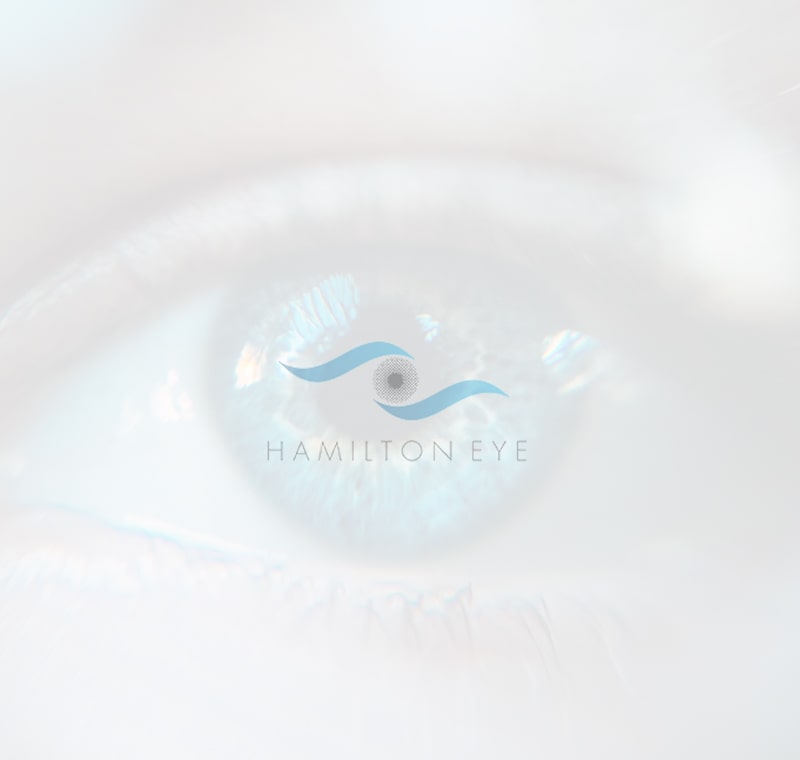RLE Experience
Refractive Lens Exchange (RLE), also known as clear lens extraction, stands as a favored avenue for individuals over 40 seeking to minimize or liberate themselves from the constraints of glasses or contact lenses. RLE primarily caters to individuals with moderate to severe farsightedness, or those aged 40 and above grappling with reliance on bifocals or reading glasses. The procedure entails the replacement of the eye’s natural lens with a synthetic lens implant, rectifying an array of vision issues including nearsightedness, farsightedness, astigmatism, and presbyopia.
Refractive Lens Exchange
In Los Angeles
RLE Experience
Refractive Lens Exchange (RLE), also known as clear lens extraction, stands as a favored avenue for individuals over 40 seeking to minimize or liberate themselves from the constraints of glasses or contact lenses.
RLE primarily caters to individuals with moderate to severe farsightedness, or those aged 40 and above grappling with reliance on bifocals or reading glasses.
The procedure entails the replacement of the eye’s natural lens with a synthetic lens implant, rectifying an array of vision issues including nearsightedness, farsightedness, astigmatism, and presbyopia.
RLE
What is RLE?
58s duration
What Our Patients Say


In our youthful years, the natural lens functions akin to the zoom capability in a camera, permitting us to focus up close without the need for reading aids. However, as we age, this lens gradually becomes compromised, resulting in diminished near vision (known as presbyopia), necessitating the use of reading glasses or bifocals. Furthermore, the aging process hardens, yellows, and clouds the lens (forming cataracts), obstructing and scattering light, thereby diminishing visual quality, quantity, and color perception.
The aging of the lens is an ongoing process, mandating the adoption of reading aids or bifocals in one’s 40s and potentially culminating in cataract surgery in the 70s or 80s. These changes lead to progressive deterioration in visual acuity, with the rate of decline varying unpredictably from individual to individual.
Thanks to advancements in technology and the established safety of the procedure, an increasing number of patients opt to undergo refractive lens exchange at an earlier stage. Many individuals, due to their active lifestyles, are averse to enduring years of gradual visual deterioration associated with cataract development; they seek a lasting solution for their vision concerns.
Refractive Lens Exchange offers numerous advantages, foremost among them being the enhancement of both near and distant vision. The substitution of the natural lens negates the need for future cataract surgery, while the artificial lens remains impervious to aging, ensuring visual stability for the eye.
If you are considering this transformative procedure and would like personalized guidance, please don’t hesitate to contact the Hamilton Eye Institute office in Beverly Hills, Los Angeles, CA. Our team of experienced and dedicated eye care professionals is ready to assist you and provide the information you need. Schedule your consultation today to embark on the journey towards clearer, sharper vision and a brighter future.

In our youthful years, the natural lens functions akin to the zoom capability in a camera, permitting us to focus up close without the need for reading aids.
However, as we age, this lens gradually becomes compromised, resulting in diminished near vision (known as presbyopia), necessitating the use of reading glasses or bifocals.
Furthermore, the aging process hardens, yellows, and clouds the lens (forming cataracts), obstructing and scattering light, thereby diminishing visual quality, quantity, and color perception.
The aging of the lens is an ongoing process, mandating the adoption of reading aids or bifocals in one’s 40s and potentially culminating in cataract surgery in the 70s or 80s.
These changes lead to progressive deterioration in visual acuity, with the rate of decline varying unpredictably from individual to individual.
Thanks to advancements in technology and the established safety of the procedure, an increasing number of patients opt to undergo refractive lens exchange at an earlier stage.
Many individuals, due to their active lifestyles, are averse to enduring years of gradual visual deterioration associated with cataract development; they seek a lasting solution for their vision concerns.
Refractive Lens Exchange offers numerous advantages, foremost among them being the enhancement of both near and distant vision.
The substitution of the natural lens negates the need for future cataract surgery, while the artificial lens remains impervious to aging, ensuring visual stability for the eye.
If you are considering this transformative procedure and would like personalized guidance, please don’t hesitate to contact the Hamilton Eye Institute office in Beverly Hills, Los Angeles, CA.
Our team of experienced and dedicated eye care professionals is ready to assist you and provide the information you need.
Schedule your consultation today to embark on the journey towards clearer, sharper vision and a brighter future.
Ready to see the world more clearly?
Ready to see the world more clearly?
In the realm of lens implants, two categories are discernible:
Standard (Monofocal) Lens Implants
These lenses are tailored to a solitary focal point, optimizing vision for a specific distance, such as distant objects. While they provide excellent vision, these implants do not correct for a full range of vision. A standar lens implant will typically necessitate the use of glasses for some daily activities, most commonly computer work, reading, and near-vision tasks. Standard lenses do not rectify astigmatism which affects all levels of vision from near to far.
Advanced Lens Implants
This category presents a broader range of clear vision without reliance on glasses compared to standard lenses. They substantially reduce dependence on glasses for everyday tasks like computer work, watching television, and driving. Four distinct types of advanced lens implants are available: the Light Adjustable Lens (LAL), the multifocal lens, the extended range lens, and the toric lens. These lenses facilitate clear vision for diverse activities encompassing both close-up and faraway tasks:
- Light Adjustable Lens: Uniquely, this implant’s power can be fine-tuned post-surgery through the application of precise ultraviolet light patterns using a system in the office without going back to the operating room. This technology allows the surgeon to correct residual nearsighted, farsighted and astigmatic refractive errors that result from individual variations in healing. This amazing technology also allows the patient to “test drive” their vision, correcting one more for distance and one for near vision. These corrections can be reversed or augmented up to 3 times in each eye using additional light treatments.
- Advanced Multifocal Lens: Functioning akin to bifocal or trifocal glasses, the multifocal lens offers an extensive range of vision. Individuals usually achieve clear vision for distant and near tasks, with over 90% reporting minimal or no reliance on glasses. Multifocal lenses are typically associated with halos around lights at night.
- Advanced Extended Range Lens: Positioned between single-focus and multifocal lenses, the extended range lens provides sharp distance vision day and night without the halos often associated with multifocal lenses. Additionally, it also delivers excellent intermediate vision. Near vision may require the use of over the counter reading glasses.
- Advanced Toric Lens: This type of implant is designed to correct high levels of astigmatism (football shaped front of eye). It serves as an ideal solution for individuals with high astigmatism and is available monofocal, multifocal and extended range lens designs.
- Small Aperture Lens: Leveraging cutting-edge technology, the Small Aperture Lens furnishes precise and focused vision spanning various distances. By eliminating unfocused light that leads to visual ambiguity, this lens ensures objects and text appear distinct and well-defined. This lens is particularly well suited for eyes where the front part is irregular in shape.
For those keen on delving further into the specifics of Small Aperture Lenses, additional information is available by contacting our office in Beverly Hills, Los Angeles, CA
More Info
Thanks to advancements in technology and the established safety of the procedure, an increasing number of patients are opting to undergo refractive lens exchange (RLE) at an earlier stage in their lives. This transformative trend in eye care is particularly evident among individuals with active lifestyles who are averse to enduring years of gradual visual deterioration associated with cataract development. The desire for a lasting solution to their vision concerns has fueled the popularity of refractive lens exchange as a proactive approach to maintaining optimal eyesight.
The traditional perception of cataract surgery as a procedure primarily reserved for the elderly has undergone a significant paradigm shift. With cutting-edge technologies such as laser-assisted RLE and sophisticated intraocular lens options, the procedure has become a viable and attractive option for those seeking not only to address cataracts but also to enhance their overall visual acuity.
The decision to undergo refractive lens exchange is often influenced by a desire to break free from the constraints imposed by glasses or contact lenses. Patients appreciate the convenience and freedom that RLE provides, allowing them to engage in various activities without the hindrance of visual aids. This shift towards early intervention is also motivated by a growing awareness of the potential benefits of maintaining clear vision throughout one’s life, promoting independence and a higher quality of life.
Moreover, the improved safety profile of refractive lens exchange has played a pivotal role in encouraging individuals to consider the procedure sooner rather than later. Technological innovations, including advanced diagnostic tools and surgical techniques, contribute to minimizing risks and optimizing outcomes. The meticulous preoperative assessments and personalized treatment plans tailored to individual needs have instilled confidence in patients, fostering a sense of security in their decision to undergo RLE.
In essence, the evolving landscape of refractive lens exchange reflects a broader cultural shift towards proactive healthcare choices. Patients are now empowered to take charge of their visual well-being, leveraging state-of-the-art advancements in ophthalmic technology to not only address cataracts but also to unlock a future of visual clarity and freedom from the constraints of traditional corrective measures. As technology continues to advance and awareness grows, the trend of opting for refractive lens exchange at an earlier stage is likely to persist, offering individuals a transformative solution to their vision concerns.
Get in Touch to Schedule a Consultation
Give us a call at: (424) 732-2020 or complete the form below to request a vision consultation to get started.
Refractive Lens Exchange Los Angeles
Frequently asked questions
What is Refractive Lens Exchange (RLE)?
Refractive Lens Exchange, also known as lens replacement surgery or clear lens extraction, involves removing the natural lens of the eye and replacing it with an artificial intraocular lens (IOL) to correct refractive errors such as nearsightedness, farsightedness, or presbyopia.
Who is a candidate for RLE?
Candidates for RLE are typically over 40 and notice difficulty with near vision. Nearsighted patients in their 40’s will notice difficulties reading small print with their glasses on or contact lenses in. Their near vision improves when they take off their distance glasses. Farsighted patients have never worn glasses for anything and will notice their near vision is becoming more difficult. They start having to hold reading material further away and eventually need reading glasses to see up close.
How is RLE different from LASIK or PRK?
RLE differs from LASIK and PRK in that it involves replacing the eye’s natural lens with an artificial lens, whereas LASIK and PRK reshape the cornea to correct vision. RLE is often chosen for individuals with higher refractive errors or those who are not suitable candidates for corneal procedures.
What are the types of intraocular lenses (IOLs) used in RLE?
There are several types of IOLs used in RLE, including monofocal lenses, multifocal lenses, and accommodating lenses. Monofocal lenses correct vision at one distance (usually distance vision), while multifocal and accommodating lenses offer the potential to see at multiple distances (near, intermediate, and distance).
Is RLE permanent?
Yes, RLE is considered a permanent procedure because the natural lens is replaced with an artificial lens that remains in place indefinitely. The artificial lens is designed to be durable and provide long-term vision correction.
What are the benefits and risks of RLE?
The benefits of RLE include reduced dependence on glasses or contact lenses, improved quality of vision, and eliminating the chance of developing a cataract later in life. Risks are very low but include those typical of any surgical procedure such as infection and need for additional surgery. Dr. Hamilton and his staff will review the risks and benefits of whatever procedure is recommended for your specific situation.
How is RLE different from LASIK or SMILE?
RLE differs from LASIK and SMILE in that it involves replacing the eye’s natural lens with an artificial lens, whereas LASIK and SMILE reshape the cornea to correct vision. LASIK and SMILE are appropriate for younger patients (i.e. less than 40) whose natural lens functions well. The natural lens starts losing its focusing power as we age into our mid to late 40’s. At some point in each person’s life, the natural lens has outlived its useful life and an intraocular lens implant can provide better visual function. This point occurs at different ages in each person. Dr. Hamilton evaluates each patient as an individual and will make a recommendation as to the best procedure for each patient’s unique situation.










